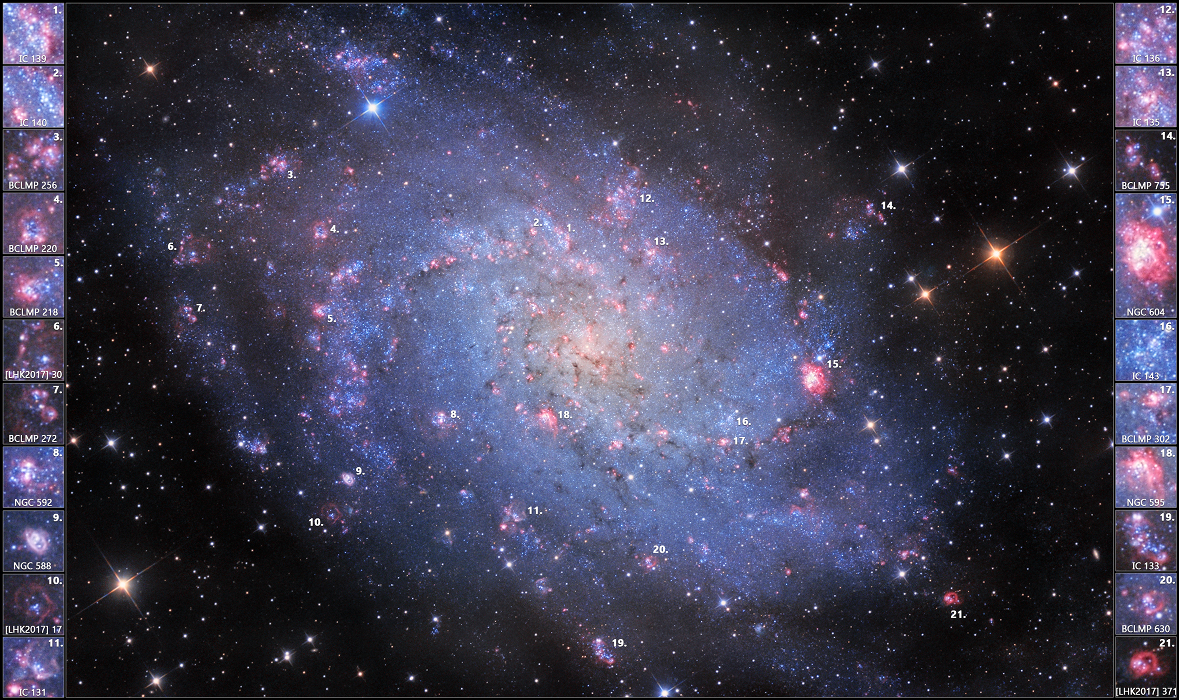M33的氢云
(原标题: The Hydrogen Clouds of M33)
2021-09-30
浏览次数: 148
华丽的螺旋星系M33似乎有更多的发光氢气。M33是本星系群的一个重要成员,也被称为三角星系,距离我们只有300万光年。沿着松散的旋臂蜿蜒向核心,M33巨大的HII区域是已知最大的恒星托儿所之一,是短寿命但质量非常大的恒星形成的地方。来自明亮的大质量恒星的强烈紫外线辐射电离了周围的氢气,最终产生了特有的红光。为了在这张望远镜图像中突出显示HII区域,用于生成星系彩色视图的宽带数据与通过氢α过滤器记录的窄带数据相结合,传输最强氢发射线的光。已编目的HII区域的特写出现在侧边栏的插图中。使用个人参考号码找到他们在三角星系中的位置。例如,巨大的HII区域NGC604在右边的插图中被识别出来,出现在第15号位置。在这幅M33的肖像中,它距离星系中心大约4点钟。
查看原文解释
Gorgeous spiral galaxy M33 seems to have more than its fair share of glowing hydrogen gas. A prominent member of the local group of galaxies, M33 is also known as the Triangulum Galaxy and lies a mere 3 million light-years away. Sprawling along loose spiral arms that wind toward the core, M33's giant HII regions are some of the largest known stellar nurseries, sites of the formation of short-lived but very massive stars. Intense ultraviolet radiation from the luminous massive stars ionizes the surrounding hydrogen gas and ultimately produces the characteristic red glow. To highlight the HII regions in this telescopic image, broadband data used to produce a color view of the galaxy were combined with narrowband data recorded through a hydrogen-alpha filter, transmitting the light of the strongest hydrogen emission line. Close-ups of cataloged HII regions appear in the sidebar insets. Use the individual reference number to find their location within the Triangulum Galaxy. For example, giant HII region NGC604 is identified in an inset on the right and appears at position number 15. That's about 4 o'clock from galaxy center in this portrait of M33.
© Luca Fornaciari
